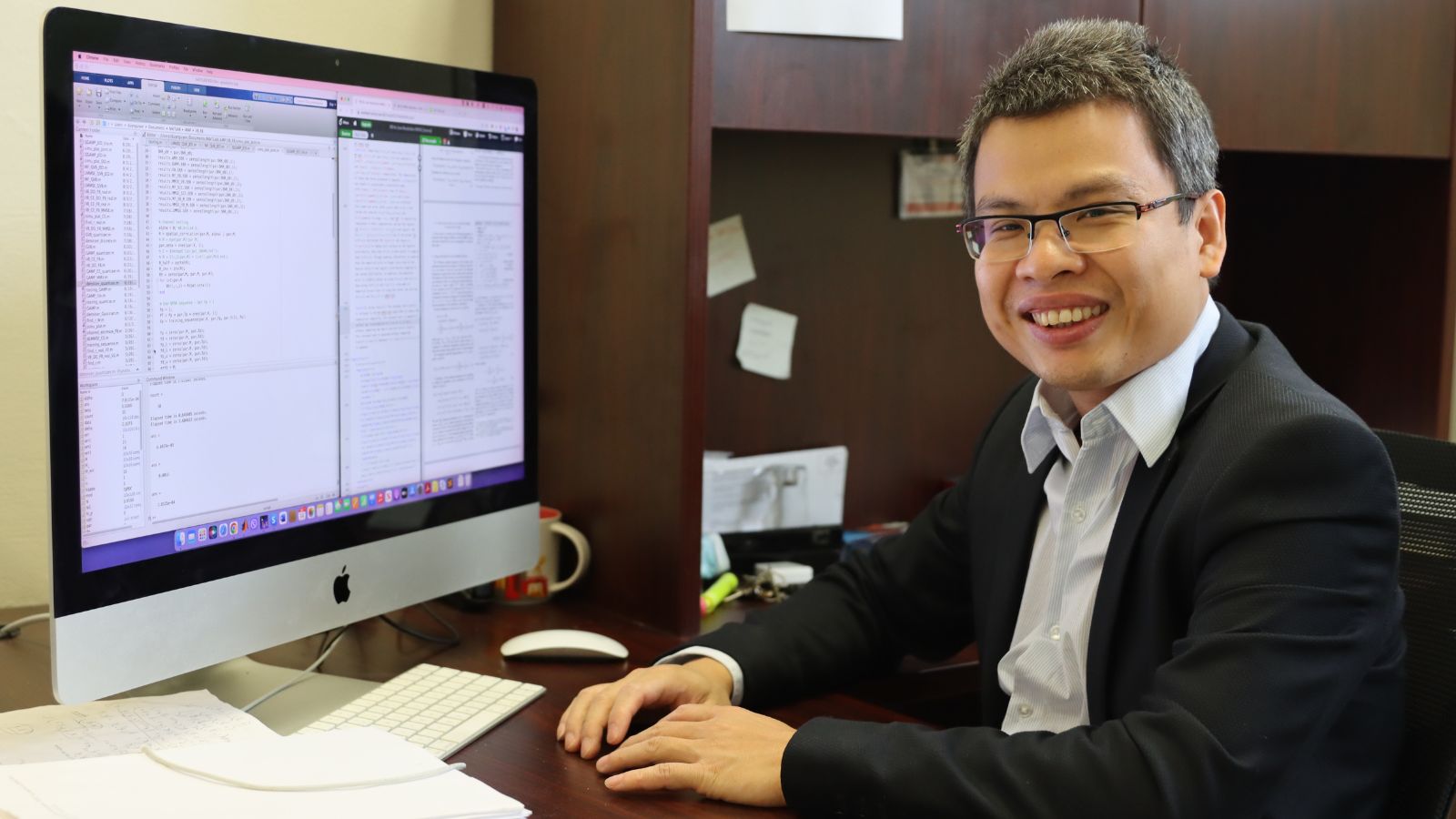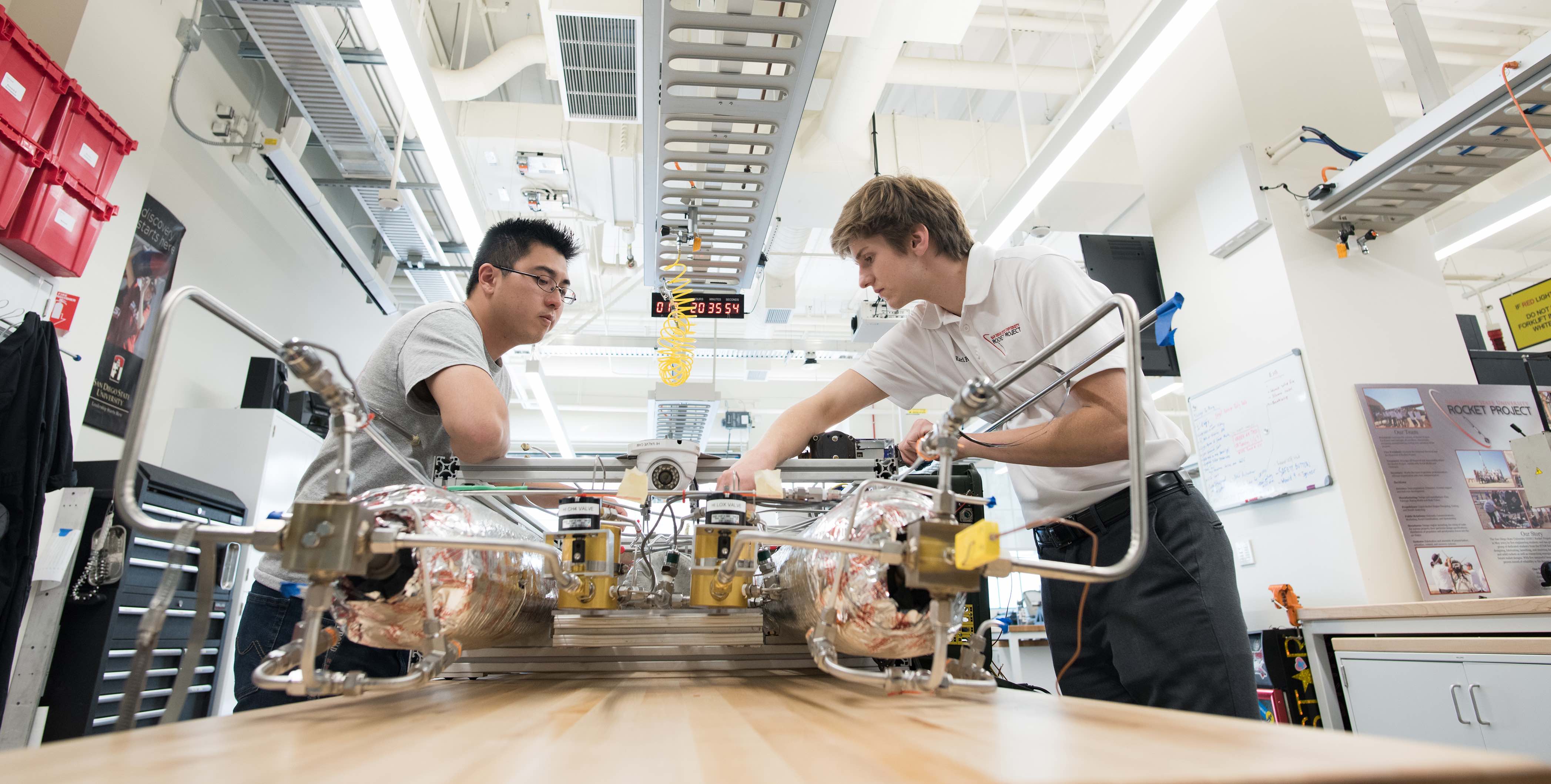Dr. Duy Nguyen Earns NSF CAREER Award

We have sensors in our cars, our phones, and now even our homes - all meant to make our day-to-day lives easier through the use of wireless communications. Electrical and Computer Engineering professor Duy Nguyen wants to make these machine learning and signal processing algorithms even stronger - and our lives even easier.
Nguyen has earned an NSF CAREER Award in the amount of $500,000 over the next five years for his research on wireless communications, signal processing, and machine learning. The NSF Faculty Early Career Development (CAREER) Award is the NSF’s most prestigious award for early-career faculty.
Nguyen's award is the college's seventh NSF CAREER Awards during the last two years, most recent of which being mechanical engineer Joaquin Camacho and environmental engineer Christy Dykstra.
The title of the project supported by this award is "Development of Learning Frameworks for Nonlinear Massive MIMO Systems".
MIMO, standing for multiple-input, multiple-output, has multiple antennas for both transmission and reception. "With MIMO, you can transmit multiple data streams at the same time and on the same frequency," said Nguyen. "By increasing the number of antennas, you can greatly increase the data rates. That's a key technology for 5G reception."
More wifi antennas in your home, for instance, allow for more devices such as phones, televisions, and computers to connect at once with strong reception. The same concept applies to data connectivity in everyday life, says Nguyen.
"We need massive connectivity in the future. Cars, cameras, and other devices have a lot of sensors, and the only way to support many devices is to increase the dimension of the data," says Nguyen.
The need for enabling massive connectivity using energy- and cost-efficient massive MIMO wireless transceivers, mobile devices, sensors, and actuators motivates the use of low-cost hardware. However, these hardware components are highly susceptible to generating nonlinear distortions.
Dr. Nguyen, who is celebrating his seventh year as a professor at SDSU, receives the 2022 NSF CAREER award to develop new learning frameworks and signal processing algorithms to resolve the nonlinearities in wireless transceivers and optimize massive MIMO performance. He will start, he says, with a practical model that will then develop into an algorithm on top of the model.
On top of this, Nguyen has also earned another collaborative NSF award that will focus on 5G networks, which he will work on alongside collaborators at UC Irvine.
"I have been so lucky to have had Duy as a collaborator. He has brought so many new ideas and perspectives to me and my research group. He is as strong a young professor as there is in the U.S. right now working on problems in signal processing for wireless communications. I am thrilled he is getting the recognition he deserves with these new NSF grants, and I expect that recognition will continue to grow. I'm looking forward to more years working together with him and his students", said Lee Swindlehurst, professor of Electrical Engineering and Nicolaos G. and Sue Curtis Alexopoulos Presidential Chair at UC Irvine.
Nguyen's PhD students have also expressed the appreciation for the skills learned in Nguyen's laboratory: “I have learned so much from Dr. Nguyen’s remarkable technical knowledge and research enthusiasm, and I am so happy that his untiring research efforts and patience have been recognized with these new NSF grants”, said Van Ly, a PhD student working under Nguyen for five years.
To assist with these two research grants, Nguyen looks forward to recruiting 2-3 new Ph.D. students for Fall 2023 to focus on wireless communications, signal processing, and machine learning.
As for coursework, Nguyen plans to use his research funding to create a Digital Communications course - one in which he is able to incorporate hardware. Currently, the course only has the capacity to focus on theory, but with the grant he hopes to incorporate off-the-shelf hardware to develop wireless communications systems of their own.

